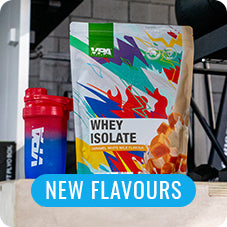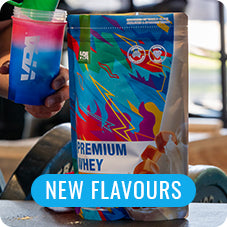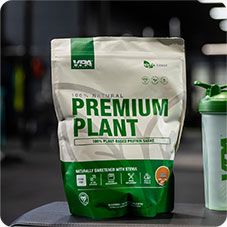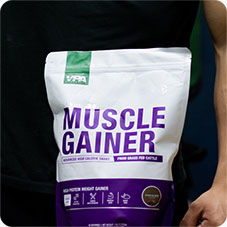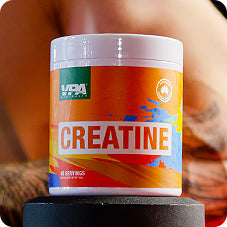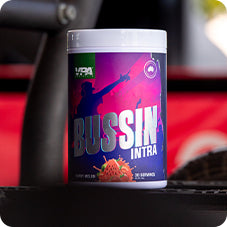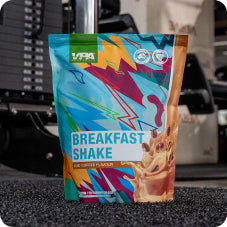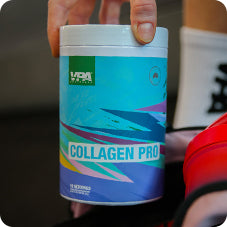Your Cart is Empty
Seven “healthy foods” that are not healthy
October 09, 2019 4 min read

“Healthy” food is everywhere. You walk into your local grocery store, and it seems like everything has a label telling you something about its health benefits. While many products on the shelves do meet healthy criteria, you also have to be careful of industry tricks. Here are seven “healthy” foods that aren't actually as healthy as you might think. May this help you choose more nutritious foods.
1. Muesli
If you are trying to keep your calorie intake lower to get in shape for this summer, you might want to avoid muesli. Yes, the wholegrain oats are a great source of fibre and iron, but many muesli options contain a lot more sugar than you would think. Also, Portion size can also play a role, as many recommended servings are far smaller than you realise, and are often much much smaller than a bowl full. If you must have muesli we suggest you avoid toasted muesli or muesli with added sugar (look at the ingredient list), but the best option is to make your own.
Because it's high in fiber and contains few calories, muesli may seem like an ideal breakfast food for anyone trying to lose weight. However, while muesli may be a good choice for some people, others should avoid it because it contains large amounts of sugar and salt.
2. Flavoured yoghurt
We often see yoghurt as healthy food, wihigh levels of calcium, vitamin B, protein and live good bacteria. While all this is true, not all yoghurts are created equal and many contain significant levels of added sugar in the form of sweeteners. Many on-the-go breakfast options that also include granola or muesli are higher again in sugar content, making them more of a dessert than a breakfast food. We suggest using unflavoured yoghurt and adding your won fruit
3. Juice
Because fruits are rich in natural sugars that are good for you in moderation, when it comes to juice, you’re consuming many more pieces of fruit than you would typically eat in one sitting – without the benefit of the fibre content. In fact, according to the Department of Health, a glass of fruit juice contains the same amount of sugar as a soft drink, around 6 teaspoons.
Juices are also high in sugar — sometimes much higher than sodas! If you're trying to lose weight or maintain a healthy weight, drinking juice instead of eating whole fruits and vegetables could sabotage your efforts. In addition, drinking juice might increase your risk of tooth decay and cavities because juices are acidic and can weaken tooth enamel over time.
4. Sushi
Although you can eat healthy low-calorie sushi, the temptation to go for the tasty sushi with the mayonnaise can cause many of us to consume many more calories than we would like to think. Watch out for sushi that contains fried ingredients and avoid the sauces like Kewpie mayonnaise. Stick to the lean meats or veggie options.
The main reason why sushi is unhealthy is because it consists of raw fish. Raw fish contains parasites that can cause serious health problems if you consume them. This is why you need to cook your fish before eating it in order to kill these parasites. If you don't cook your fish properly, then you might end up getting sick after eating sushi.
5. Sports drinks
Because these sports drinks are designed for athletic performance and not fat loss, they are full of sugar and salts which athletes need to replenish to maintain high performance. In fact, many popular brands available in Australia contain between 9-19 teaspoons of sugar per bottle, so avoid them.
6. Low-fat and fat-free labelled products
These are the sneaky foods at the supermarket, because yes they are low in fat…but to make up for the flavour they are often full of sugar and salt. Also fat is often good for you, it is satiating so it makes you feel full, so these low-fat foods make you more hungry and then you end up eating more. So don’t avoid good fats, in fact the Australian Government guidelines for fats recommend the regular consumption of polyunsaturated fat (found in fish and nuts) and monounsaturated fat (found in olive oil and avocado) as part of a balanced diet.
7. Restaurant-made and pre-packaged salads
Not all salads are healthy! Of course, the vegetables are healthy, but it is all the extra ingredients that get you. For example, McDonald’s crispy chicken caesar salad contains more calories than two of their cheeseburgers. Many salads trick you because the salad dressing is often full of sugar, making them taste really good…but they are not so healthy. We suggest making your own salads and using salad dressings such as olive oil or lemon.
We all know that eating healthy is good for us and that there are many benefits to it. However, even though we all know what foods to avoid consuming and which ones to include in our diets, there are still some loopholes in the system, which allow unhealthy foods to be classified as “healthy”. One needs to be careful in choosing what one eat. We hope that the article helps you in making good food choices.
Also in Diet and Nutrition

10 Quick Pre-workout Bites to Power Your Training
May 22, 2024 5 min read
Fuel your workout with these 10 quick and delicious pre-workout snack ideas. From smoothie bowls to power-packed pancakes, find the perfect bite to boost your training session.
Read More
Banish the Belly Bloat: Simple Solutions for a Flatter Feeling
May 20, 2024 6 min read
Discover simple solutions, exercises, and dietary tips to banish belly bloat and achieve a flatter stomach. Learn more at VPA's blog on diet and nutrition.
Read More
Navigating the Golden Years: Enhancing Mobility as You Age
May 08, 2024 4 min read
Learn why mobility matters as you age, discover your mobility toolkit, fuel your active lifestyle with the right food, and make staying active fun and sustainable. Read more on VPA.
Read More Recent Articles
- 10 Quick Pre-workout Bites to Power Your Training
- Banish the Belly Bloat: Simple Solutions for a Flatter Feeling
- Navigating the Golden Years: Enhancing Mobility as You Age
- A Comprehensive Dive into the World of Biohacking
- Why you should try the Mediterranean Diet
- Managing Blood Sugar Spikes: A Comprehensive Guide for Better Health
- Fuel Your Recovery: Unraveling the Importance of Post-HIIT Workout Nutrition
- 10 Spooky and Startling Health Facts for Halloween
- The Ultimate Guide to Tracking Your Macros Effectively
- Mastering Meal Prepping for Health and Fitness: Tips, Inventory, Planning, Types, and Essentials


